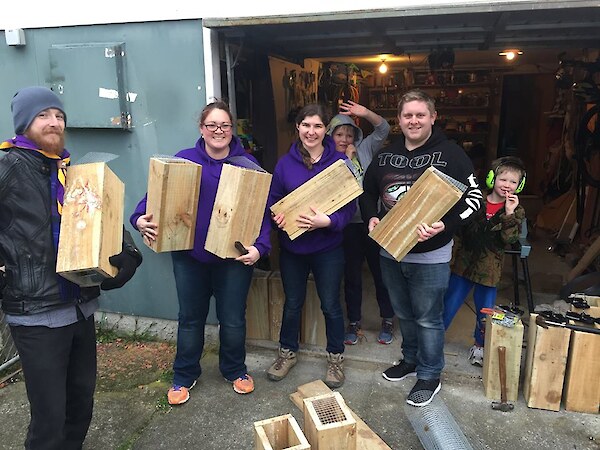Wellington leading the charge in conservation efforts
Wellingtonians are leading the charge in conservation efforts, with more predator free groups established than any other city – and more than 300,000 native trees planted too!
“Wellington is at the forefront of a remarkable sea-change, having successfully created a social movement with almost all suburbs (25 now) undertaking backyard trapping throughout the city. 40 odd community groups are actively trapping in the city’s reserves and 80 community groups are working in the broader ecological restoration space”, says Predator Free Wellington Project Director, James Willcocks. “Not only are we leading the charge from a predator free perspective, but this year Wellington city has also seen almost 350,000 native trees planted by community groups and Wellington City Council, and recorded at Trees That Count.”
 Image courtesy Predator Free Newlands / Paparangi / WoodridgePredator Free Wellington has launched a new website which now allows Wellington residents to connect with their local group to get involved with backyard trapping, or volunteer to help in a reserve.
Image courtesy Predator Free Newlands / Paparangi / WoodridgePredator Free Wellington has launched a new website which now allows Wellington residents to connect with their local group to get involved with backyard trapping, or volunteer to help in a reserve.
Predator Free Wellington Portfolio Leader, Councillor Andy Foster says “Wellingtonians are really stepping up to help make the city they want to live in. There are enormous opportunities here for biodiversity, our local economy, tourism, health, and of course the social outcomes are huge!”
“Predator Free Wellington is a partnership between Wellington City, Greater Wellington Regional Council and the NEXT Foundation, but it is so much more, it is a partnership with other funders, and most of all with Wellingtonians, businesses, schools and community groups,” says Councillor Foster.
“There is incredible social momentum which has just exploded over the last 18 months or so. It started with Kelvin Hastie mobilising his suburb Crofton Downs into backyard trapping - and grew from there. Kelvin is now the NEXT Foundation Predator Free Community Champion and inspires and supports many Predator Free groups not just in Wellington, but throughout New Zealand.”
In Wellington, somewhere in the vicinity of 5,000 households are participating in backyard trapping connected through their suburban groups and reserve groups, and that number is growing by the day. This is contributing tens of thousands of hours of volunteer hours, and that’s just in predator control. At most recent count we’ve collectively removed over 13,000 rats, mice, weasels and stoats which is great news for native birds, lizards and insects.
There is a place for everyone within the Predator Free Wellington project. I know from personal involvement that there is an endless amount to learn, and fascinating stories to share. The Predator Free Wellington website is designed as a go to place which will be a repository of all sorts of interesting and valuable information, and ways to get involved. Like Predator Free Wellington the website will be constantly evolving and developing.”
Posted: 21 December 2017
